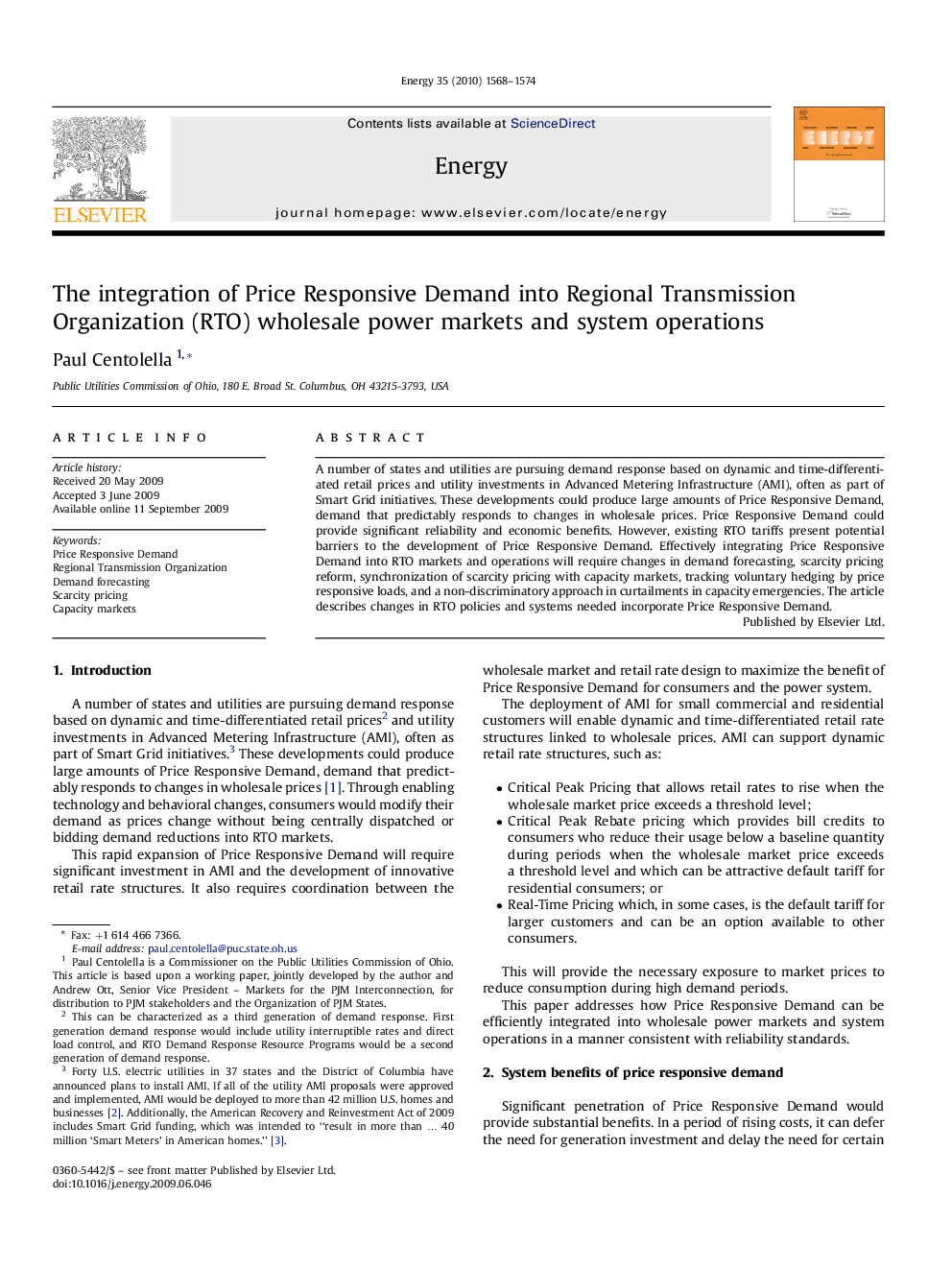| Article ID | Journal | Published Year | Pages | File Type |
|---|---|---|---|---|
| 1735657 | Energy | 2010 | 7 Pages |
A number of states and utilities are pursuing demand response based on dynamic and time-differentiated retail prices and utility investments in Advanced Metering Infrastructure (AMI), often as part of Smart Grid initiatives. These developments could produce large amounts of Price Responsive Demand, demand that predictably responds to changes in wholesale prices. Price Responsive Demand could provide significant reliability and economic benefits. However, existing RTO tariffs present potential barriers to the development of Price Responsive Demand. Effectively integrating Price Responsive Demand into RTO markets and operations will require changes in demand forecasting, scarcity pricing reform, synchronization of scarcity pricing with capacity markets, tracking voluntary hedging by price responsive loads, and a non-discriminatory approach in curtailments in capacity emergencies. The article describes changes in RTO policies and systems needed incorporate Price Responsive Demand.
